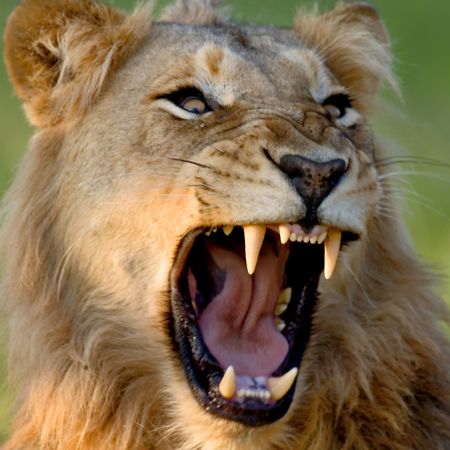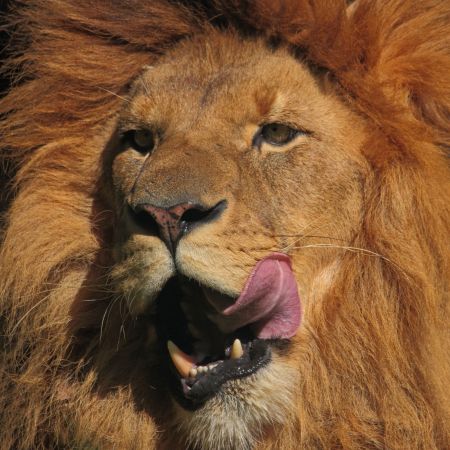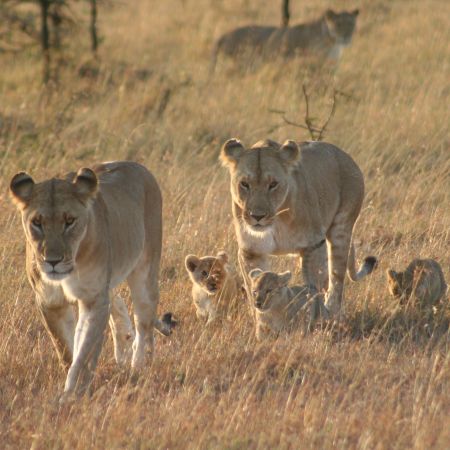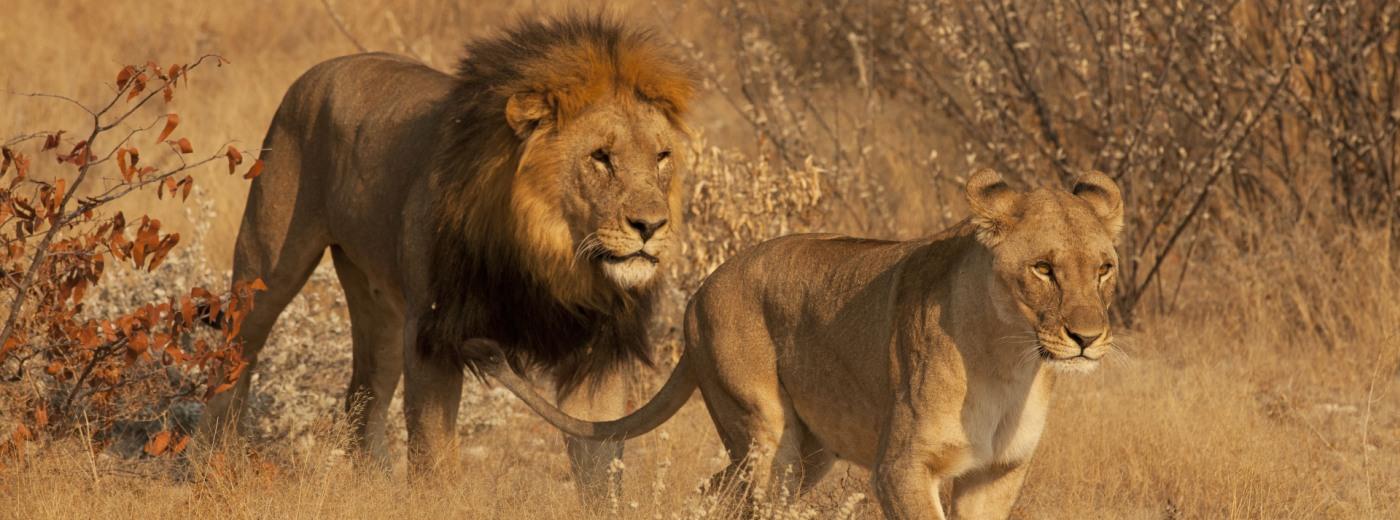Everything you need to know about the 'King of the Jungle'
The largest African carnivore, male lions weigh on average around 190kg, and females 125kg. Lions tend to live in territorial or nomadic prides of between 4 and 12 related females (mothers, sisters, aunts, nieces), and one to 6 dominant males, who are unrelated to the females.
 Except when either extremely hungry or thirsty, a lion will spend most of the day sleeping or resting under the shade of a tree. So accustomed are they to the sound of vehicles in some game reserves, they barely stir themselves when a vehicle approaches.
Except when either extremely hungry or thirsty, a lion will spend most of the day sleeping or resting under the shade of a tree. So accustomed are they to the sound of vehicles in some game reserves, they barely stir themselves when a vehicle approaches.
Dinner Time
Lions become active at night, and the pride will tend to start moving in the very late afternoon or early evening in search of prey, and will eat whatever is most abundant. They work together as a 'team' to catch their prey, and are capable of bringing down an animal more than twice their size and weight such as zebra and buffalo.
Lions are expert stalkers, and will use all available cover, including engine noise, to get as close as possible to their prey before launching a final assault. They are capable of covering 100m in 6 seconds, but are unable to keep this speed up over any distance - 200m is tops.
The lionesses tend to do most of the killing unless the animal is significantly large, such as a buffalo, when the sheer weight of a male is needed to help pull the animal down. Once the prey has been brought down, it is quickly killed. Either its neck is broken when it is bought down, or it is killed by 'strangulation' - the lioness will clamp her strong jaws around the prey's neck or nose until it literally suffocates.
Feeding Behaviour
 The larger males will feed first, then they will be joined by the females and younger pride members, who will spread themselves out along either side of the carcass.
The larger males will feed first, then they will be joined by the females and younger pride members, who will spread themselves out along either side of the carcass.
The entire pride will generally gorge themselves until their bellies are totally extended.
Unless food is particularly scarce, feeding is a relatively peaceful event, with only the occasional argument taking place.
If food is scarce, however, violent fights can take place, during which younger pride members can be killed themselves.
Both male and female lions tend to roar immediately after a successful kill, and the sound is one of the most magnificent sounds of the African bush. It increases steadily in volume, and can be heard up to 8 km away.
Offspring
Cubs are born around February - March time, and the female will leave the pride and go off on her own to give birth of to up to 6 cubs, although it is very rare that all the cubs will reach one year old.
The lioness returns with her cubs when they are about 6 weeks old, and introduces them into the pride. This is to primarily protect the young cubs from the boisterousness of any 'teenage' cubs from last year's litters, who will use the new cubs as 'play toys' given half the chance.
It is also to protect the male cubs from the dominant male lions in the pride, who may view them as a potential future threat and decide to 'eliminate' them before the threat becomes a reality.
 The mother is particularly protective of her young cubs, and will charge anything or anyone who she feels is threatening them.
The mother is particularly protective of her young cubs, and will charge anything or anyone who she feels is threatening them.
Growing Up
Lion cubs have disproportionately large ears, and when they are extremely young, it is very difficult to tell the different sexes apart.
The mane growth in the males is noticeable when the cubs reach one year old, but it takes between 4 to 5 years for a male lion to fully develop his trademark mane.
The female lions are the stable core of the pride, and it is the males who come and go. Any female cubs born into the pride will remain, but any male cubs will leave the pride when they reach about 2 years old.
Coalition
The male siblings who leave the pride form what is called a male-only 'coalition'. They will remain together, hunting as a team, and when they reach maturity at about 5 years old, they will look for a pride to take over together.
To successfully take over a pride means displacing the existing dominant male or males of that pride - normally by fighting.
Once the battle has been won, the new males will then make sure that all traces of the previous male is eroded - unfortunately this means killing any cubs in the pride. This induces the female who has just lost her cubs to come into estrous immediately, thus enabling the new male or males to sire their own offspring.

